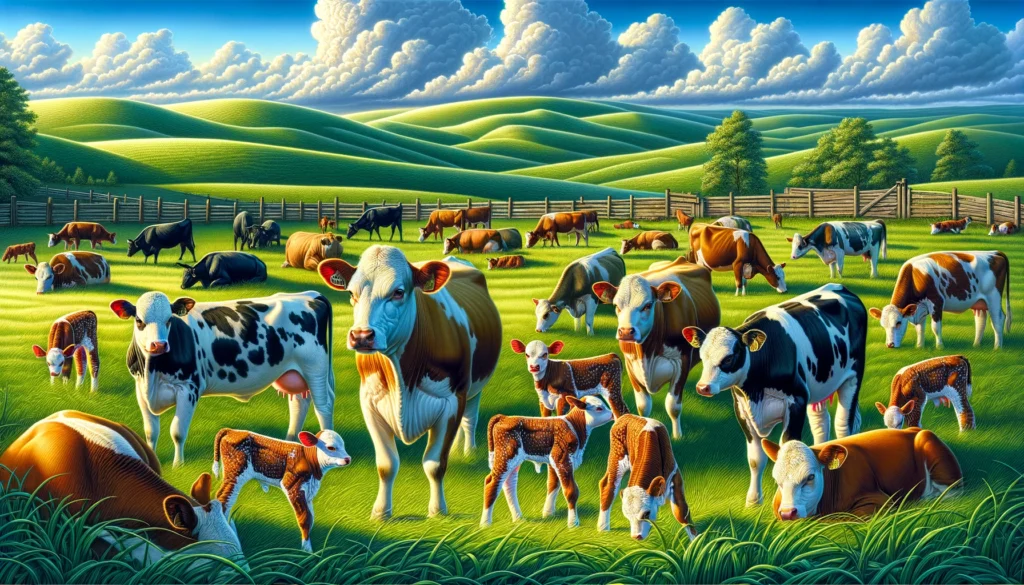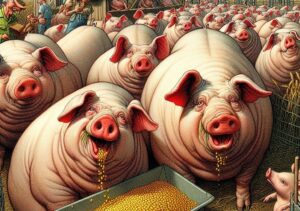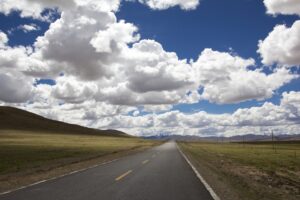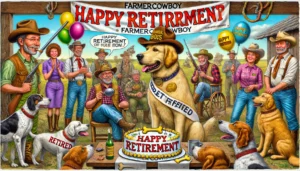
Agriculture Dictionary A vivid and detailed illustration of a cow calf operation in a large green pasture. The scene includes several cows and their calves grazing and resti1.webp.webp

Definition: Cow-Calf Operation
A cow-calf operation is a type of cattle farming where the primary focus is on breeding cows and raising their calves until weaning age. This operation is fundamental to the beef industry, as it produces the calves that are later grown for beef production.
In-Depth Analysis and Applications
- Operation Structure: Cow-calf operations typically involve a herd of breeding cows and a bull or use artificial insemination (AI) for reproduction. The primary goal is to produce healthy calves that can be sold for further growing and finishing in feedlots or retained for breeding. These operations are usually extensive, with cattle grazing on pastureland.
- Breeding and Reproduction: Successful breeding is crucial for cow-calf operations. Cows are bred to calve annually, with a calving season planned to maximize efficiency and use of resources. AI is commonly used to introduce superior genetics and improve herd quality. Management practices include monitoring cow health, ensuring proper nutrition, and maintaining accurate breeding records.
- Calving and Early Care: Calving season requires close monitoring to ensure the health and safety of both cows and newborn calves. Farmers assist with difficult births and provide care for the calves, including ensuring they receive colostrum within the first few hours of life. Calves are often tagged for identification and records kept on their growth and health.
- Nutrition and Grazing: Cow-calf operations rely heavily on pastureland for grazing, supplemented with hay and other feed during winter or dry periods. Proper pasture management, including rotational grazing and maintaining pasture quality, is essential. Nutritional supplements, such as minerals and vitamins, are provided to ensure the health and productivity of both cows and calves.
- Health and Veterinary Care: Regular health check-ups and vaccinations are vital for maintaining herd health. Common health issues include respiratory diseases, parasitic infections, and reproductive disorders. Preventive measures, such as deworming, vaccination programs, and proper hygiene, are essential. Farmers also focus on biosecurity measures to prevent the introduction of diseases.
- Weaning and Marketing: Calves are typically weaned at around 6-8 months of age, when they are ready to be sold or retained for future breeding. Weaning is a critical period that requires careful management to minimize stress on the calves. Weaned calves are then sold at auction or directly to feedlots for further growing and finishing.
- Economic Importance: Cow-calf operations are the foundation of the beef supply chain. They provide the initial stock of calves that are essential for beef production. The profitability of these operations depends on factors such as calf prices, feed costs, and overall herd productivity. Effective management practices, including cost control and efficient breeding strategies, are crucial for economic sustainability.
- Environmental Considerations: Cow-calf operations can have significant environmental impacts, including land use, water consumption, and greenhouse gas emissions. Sustainable practices, such as rotational grazing, soil conservation, and efficient water use, help mitigate these impacts. Innovations in genetics and management also aim to enhance the sustainability of these operations.
- Cultural and Societal Roles: Cow-calf operations are integral to rural communities, providing livelihoods and contributing to local economies. They are also a part of the cultural heritage in many regions, symbolizing traditional farming practices and the rural way of life. Educational programs and agricultural fairs often feature cow-calf operations to promote understanding and appreciation of cattle farming.
- Challenges and Future Directions:
- Health Management: Advances in veterinary care and disease prevention are essential for maintaining healthy cow-calf operations.
- Sustainability: Developing sustainable practices for cow-calf operations is crucial for the future of cattle farming.
- Genetic Improvement: Continued focus on genetic selection for traits such as growth efficiency, disease resistance, and productivity is important.
- Market Dynamics: The economic viability of cow-calf operations depends on market conditions, including demand for beef and the costs of feed and healthcare.
- Industry Trends:
- Precision Agriculture: The use of technology in monitoring and managing cow-calf health and growth is increasing.
- Genomics: Advances in genomics are improving the selection process for breeding cow-calf herds with desirable traits.
- Welfare Standards: Enhanced animal welfare standards and practices are becoming more prevalent, driven by consumer demand and regulatory requirements.
- Global Trade: The trade of calves and genetic material across borders is contributing to global improvement in cattle herds.
Resources for Further Exploration:

Originally posted 2024-06-11 03:20:15.
Fall off the barn roof and busted your keister? Life on the farm or ranch can be tough on the bum. Need a break? Laugh it off at FarmerCowboy.com, the #1 farm humor site. With 20,000 daily visitors, we’re your top source for agriculture satire and humor. Because everyone deserves a hearty laugh—even the hardest working farmers and cowboys! Join us and turn those long days into fun tales at FarmerCowboy.com.
Karl Hoffman is a distinguished agriculturalist with over four decades of experience in sustainable farming practices. He holds a Ph.D. in Agronomy from Cornell University and has made significant contributions as a professor at Iowa State University. Hoffman’s groundbreaking research on integrated pest management and soil health has revolutionized modern agriculture. As a respected farm journalist, his column “Field Notes with Karl Hoffman” and his blog “The Modern Farmer” provide insightful, practical advice to a global audience. Hoffman’s work with the USDA and the United Nations FAO has enhanced food security worldwide. His awards include the USDA’s Distinguished Service Award and the World Food Prize, reflecting his profound impact on agriculture and sustainability.





